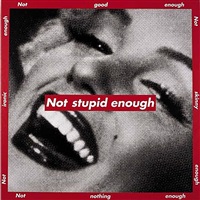Following my 1-1 with Jane today, 26/05/21, we discussed the fact I must acknowledge the critique of my work. It is very controversial I have learnt from feedbacks and it is a sensitive topic of female control.
As I have directed the male to put and bite down on the breast in his mouth is strong thought. It is interesting to mention from this talk with Jane that if this was a males instruction/direction, the outcome of the film would be completely different and be clearly sexualising and glamorising the control/destruction of the female form done by a male, instructed by a male. So, with this idea of a female instructing a male to do the act, it makes the work feels female dominant in the sense of myself having control over the male in the film and essentially the breast. Providing the viewers an outlook on female consumption through the female gaze, like how the cinema work with a female director, they use situations where they use situations of the male gaze through a female perspective, to allow all audiences to experience its effect. E.g. highlighting a man catcalling women, the director would focus on the impact it has had on the women to exploit it. Like Barbara Kruger’s Your Gaze Hits the Side of My Face and like how I have done with my current films, making it feel female empowered, as I am exploiting the consumption of a female (breast) through a male, showing the issues with male control/dominance.
Reflection 26/05/21: Like Laura Mulvey within her famous essay Visual Pleasure and Narrative Cinema, she explores and states the impact the male gaze has upon the cinema and women through a female perspective. It was the early years of this being brought to light/listened too where we began to see change as women so it was very controversial. I feel like I am like this now with my growing practice, I will continue to challenge the male gazes’ impact and dominance upon women as it is still very much an issue.
This lead to me question, does To Bite B&W Repeat also encourage the sexual objectification of women? This is something I have considered but haven’t paid much attention too. Based off of feedback from 1-1s and group crits with my peers/tutors, I learnt that men watching said they felt disgusted/discomfort as they may potentially put them self in the position of the male doing the consumption, where as women watching, feel the consumption and the intensity of the control. So, is it the imagery and act of male control, sexual objectification and destruction that disgust the men? Or is it just this film and that is all? Ultimately, the breast is still being eaten/controlled which ever way you look at it.
And to recap the exploration of my work, I have explored many aspects of the female forms exploration throughout my degree. Last year in level 5 I explored the natural female forms representation and the empowerment it has. I celebrated different body shapes/breast shapes and sizes in reflection to how we both see ourselves as well as each other using mirrors, coloured light in regards to the natural elements of the body. The female gaze and the self gaze was my main focus which had developed from my initial focus on the male. The female gaze approach slowly developed into exploring the ‘grotesque’ towards the end of level 5, and the side of the form we don’t often see/celebrate due to our online presences. We chose to show our best side of ourselves which then confuses ourself and each other with whether that is real or not.
Growing into level 6, I aimed to take this grotesque element further and to zone into the important areas of the female form. This being the breast as it is the most sexualised part of the female body, due to the male gaze, the media and the cinema. And especially pornography which is something I aim to take further and develop with my sculptural performance. I focused on the breast and accentuating the sexualisation that comes with it (from the male gaze, the media, the cinema and pornography), especially recently within my b&w film of To Bite B&W Repeat, it has explored the flip side/dark side of the female form that naturally follows it = sexual objectification as currently they are the most challenging aspects. The use of a monochrome palette and a dark space for the projection has essentially intensified this view which feels dark, sinister. Upon reflection, this exploration of the darker side to the form was bound to happen as the female form is not all about beauty, it is prominently about the impact that is from the male gaze and the control men have had our the female form for years previously. We as women, are currently getting to a point where we can explore/express our feelings towards this.
I have only touched upon the grotesque/control which is exploiting the sexual objectification and dominance of the female body. There is still whole aspect of pornography to dive into which leads to fetishism of women by Sigmund Freud, which has developed from the castration anxiety. I experimented throughly with controlling the male through performative sculpture and it may be interesting to work with other foods on a large scale, in relation to sexualisation and consumption and to reintroduce the empowerment of women through this format, almost through a new view upon the female form and food? Or will the female form always have a relation/stigma tied to consumption and food which we cannot escape.
Possible materials/foods to work with in the future – fruit, sweets, chocolate? I still really enjoy projection and feel like there is still so much to explore in relation to installation and placement in many space.




























